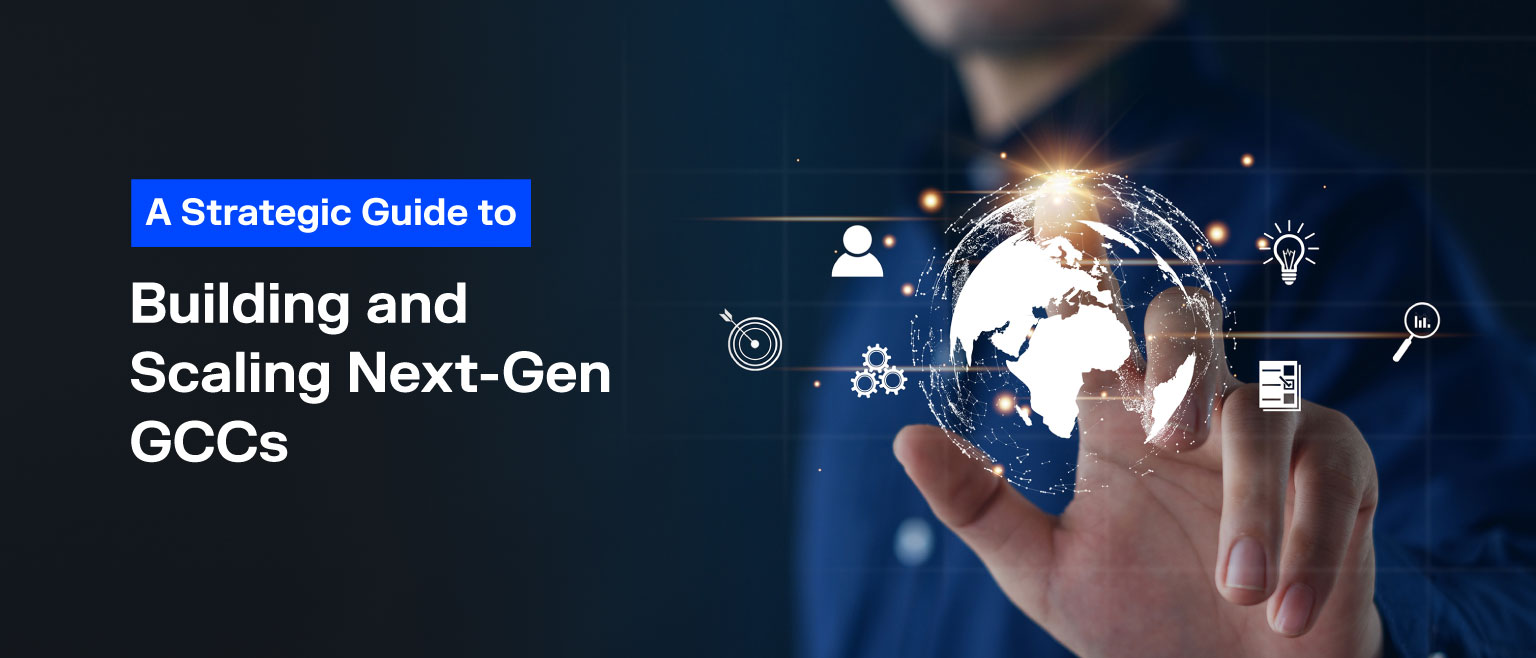A Strategic Guide to Building and Scaling Next-Gen GCCs
The Global Capability Centre (GCC) model in India is undergoing its most significant transformation yet. Once primarily viewed through the lens of cost arbitrage, the Indian GCC is now transitioning into a vital, strategic powerhouse—the central nervous system for global enterprise innovation and resilience. For global MNCs and the Indian CEOs leading these centers, achieving business objectives and competitive advantage hinges on mastering this shift from efficiency to excellence.
The Global CEO’s Mandate: From Cost Arbitrage to Strategic Innovation
The discussion around the GCC has migrated definitively from the procurement department to the priority boardroom agenda of the Global CEO. The mandate for the India GCC is no longer limited to cutting costs; it is focused on strategic imperatives: accelerating AI-driven innovation, ensuring global stability against geopolitical disruptions, and mitigating enterprise risk.
The sheer scale and trajectory of the Indian ecosystem validate this expansion. India’s GCC market, which generated an estimated $64.6 billion in Fiscal Year (FY) 2024, is projected to reach around $100 billion by 2030, according to KPMG.
For Global MNCs that have yet to fully leverage India’s strategic advantage, the hesitation often stems from internal misalignment. Many MNCs still treat GCCs as “child entities,” starving them of autonomy. This mindset leads to high attrition and missed innovation opportunities.
Benefits of Setting Up GCCs in India
According to ANSR’s quarterly report, over 450 Forbes Global 2000 companies operate more than 825 GCCs in India, employing close to 1.3 million professionals. India is widely recognized as the premier location for setting up and scaling global capability centers due to the following benefits:
| Strategic Lever | Impact |
|---|---|
| Cost Efficiency | 40–70% labour savings vs. Western markets; reinvestment into R&D |
| Talent Access | Deep STEM pipeline from IITs/IIMs; 52% of leaders cite talent as top driver |
| Innovation & R&D | 86% of GCCs now lead AI/ML initiatives (up from 65% in 2019) |
| Resilience & Scale | Rapid scale-up/down; geographic diversification |
| Government Incentives | SEZs, tax breaks, and pro-GCC policies |
Aligning Vision: The Role of the Indian CEO
For the GCC to evolve into a strategic partner, the India CEO’s vision must be seamlessly integrated with the global charter. The mandate must include building decision-making influence and developing strong leadership capabilities, moving beyond basic operational management. Success requires establishing a management approach centered on shared purpose, alignment, and value creation, entirely distinct from vendor management metrics.
Governance must shift the measurable outcomes. While cost remains a factor, the focus must move to strategic metrics, such as Gross Value Added (GVA) per employee and measurable influence on global product roadmaps. These innovation-focused KPIs secure continued HQ commitment and affirm the centre’s role as a strategic engine.
Scaling Challenges: New Entrants vs. Established Leaders
The path to a Next-Gen GCC is fraught with different challenges based on maturity:
- Pain Points of a New GCC: New entrants face significant setup friction, particularly in navigating complex regulatory compliance, such as data localization norms in highly regulated industries. Furthermore, they must prioritize world-class IT infrastructure, including high-end cybersecurity and cloud readiness, from day one to ensure stability and support high-tech operations.
- Challenges of Established GCCs: Older centers grapple with legacy debt—both technical and organizational. Their most significant operational hurdle is talent retention, identified as the top concern by 51% of respondents. This high attrition is often symptomatic of a failure to transition away from the legacy back-office perception, resulting in limited career progression or a lack of ownership over cutting-edge projects. Reducing attrition requires granting autonomy over global mandates before salary increases can yield lasting results.
Achieving Competitive Advantage
Competitive advantage is secured by transcending basic service delivery and establishing deep domain specialization. The strategic roadmap demands building specialized Centers of Excellence (CoEs) in Engineering Research & Development (ER&D), AI/ML, and Cybersecurity. According to Fortune India, ER&D GCCs, for instance, have expanded at a rate 1.3 times faster than the overall sector, underscoring the critical nature of this shift.
By empowering these CoEs with executive autonomy and focusing on metrics that quantify innovation and IP creation, the Next-Gen GCC transforms its technological investment into demonstrable market distinction. For global enterprises struggling to meet objectives, the decisive action is clear: India is not just an option for global scalability; it is the answer for enterprises seeking to lead the next wave of global digital transformation. The time to act decisively and enter with a specialization mandate is now.
Final Word: India Is Not Just an Option—It’s the Answer
For global enterprises seeking resilience, innovation, and scale, India’s GCC model offers a strategic leap. But success demands a mindset shift—from service delivery to domain leadership.
The time to act is now. Enter with a specialization mandate, align leadership, and build for long-term value.
Related Blogs
Technology with Empathy: Designing User-Centric Solutions in a Machine-First World
Design is a funny word. Some people think design means how it looks. But of course, if you dig deeper, it’s really how it works. This quote was quoted by…
Industrial IoT and AI/ML: From Data Collection to Real-Time Decisions
Every industry, right now, is going through major changes due to the introduction of new technologies and innovation. And these innovations don’t just talk about making the process faster, but…
Technology at the Core: Evolving at Lightning Speed, Staying True to the Basics
From a background in government advisory, policy formulation, and regulatory frameworks, one learns how policies shape industries and how the right regulations can accelerate innovation. These foundational principles of strategy,…





